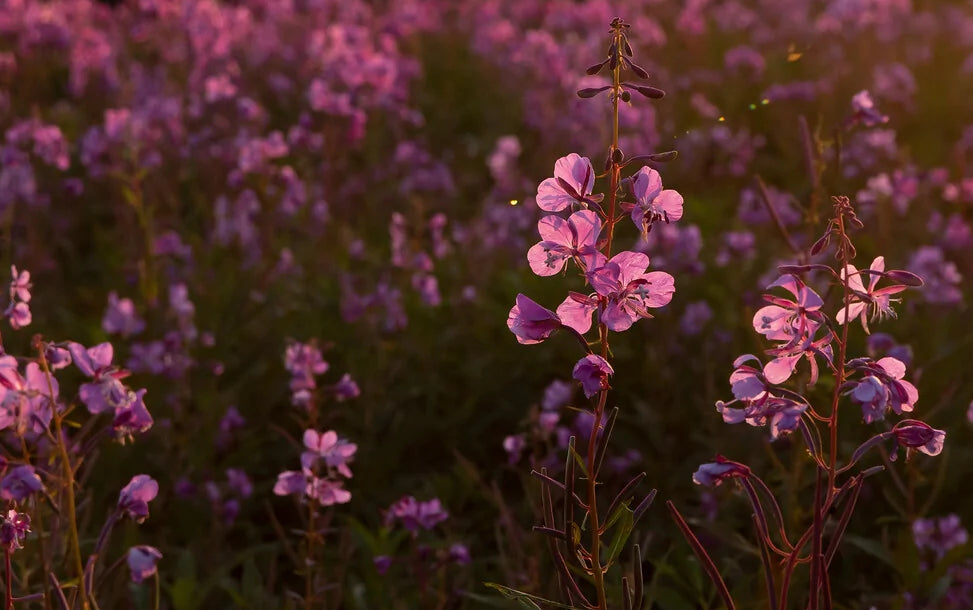
We put the word "wild" in our name for good reason. To create our teas, we spend much of our time foraging various plants and fungi that grow naturally and perennially in our Southern Oregon Coast Range environment, indigenous to the ecosystem we call home.
We've written extensively before about wildcrafting — what it means and means to us, and how we aim to do it ethically. You can read that primer here. Today, we thought we'd introduce you to one of our favorite wild ingredients, featured in three of our signature tea blends: fireweed.
The violet blooms you see in the photo above belong to Shamerion angustifolium, otherwise known as fireweed (or sometimes, willow herb). This native plant grows abundantly throughout the Pacific Northwest and across many other continents. It's a resilient perennial, beloved by wildlife from bumblebees to bears that feed on its stalks and blossoms — not to mention humans.
In the Twana language of the Coast Salish peoples, this plant is known as spukWu’say and used for both food and fiber, as well as its believed medicinal benefits. According to herbalist and native foods specialist Elise Krohn, Skokomish Elder Bruce Miller has recommended fireweed tea as a balm for lung congestion and sore throats, but the plant has a long and diverse history of medicinal applications among various Indigenous communities, co-opted by doctors in colonizers' populations in the late 1800s and now integral to numerous herbalism traditions.
It's worth noting that the plant's common name — fireweed — is based on its ability to thrive in areas that have been previously impacted by fire, logging, and general disturbance. That feels like an inspiring quality in these times, doesn't it? Fireweed was one of the first plants to arrive after the eruption of Mount St. Helens in Washington in 1980, as well as bombed urban areas in London during World War II.

At Wild Coast Brew, we wild-harvest the towering plant stalks when they are just flowering in the hot summer months...starting now! We just gathered our first 50-pound harvest last week.
We then strip the leaves and leave them to wilt overnight on drying screens. We use the same method that is used to process and make black tea: once the leaves are wilted properly, we meticulously hand-roll the leaves for about an hour and ferment the leaves in a bamboo basket.
Once the fermentation is complete, the aroma of the fireweed transforms from grassy and vegetal to fruity and sweet, almost like freshly pressed apples. Fermentation is then halted by oxidizing the pressed leaves in the sun to dry.
The bright pink fireweed blossoms are then added to the dried fireweed tea leaves and infused for up to a year. What comes of this labor-intensive process is an earthy yet fruity brew that combines the flavors of deep black tea and earthy green tea, also referred to as Ivan Chai, part of a long cultural tradition in Russia and Siberia.

Are you familiar with fireweed? Have you tasted it yourself? You'll find it in three of our signature brews — The Trickster, The Creator, and The Sage — if you want to try it out.

